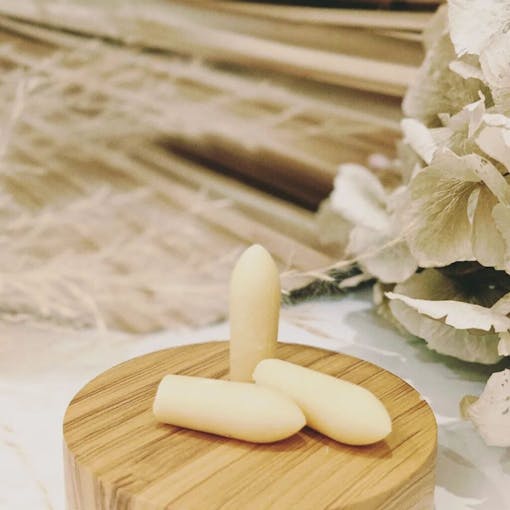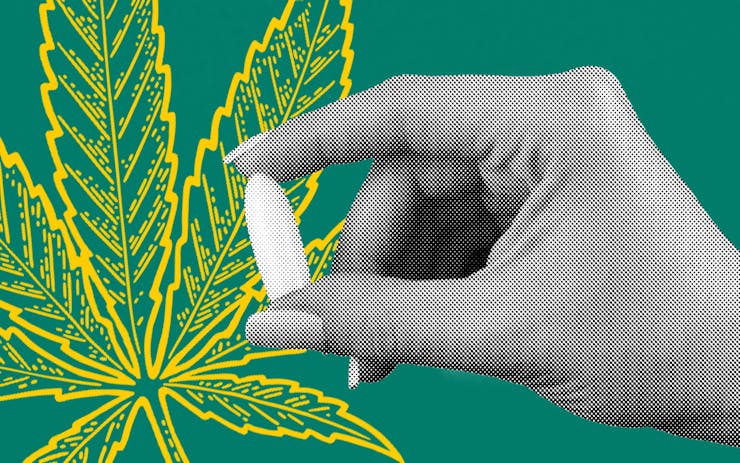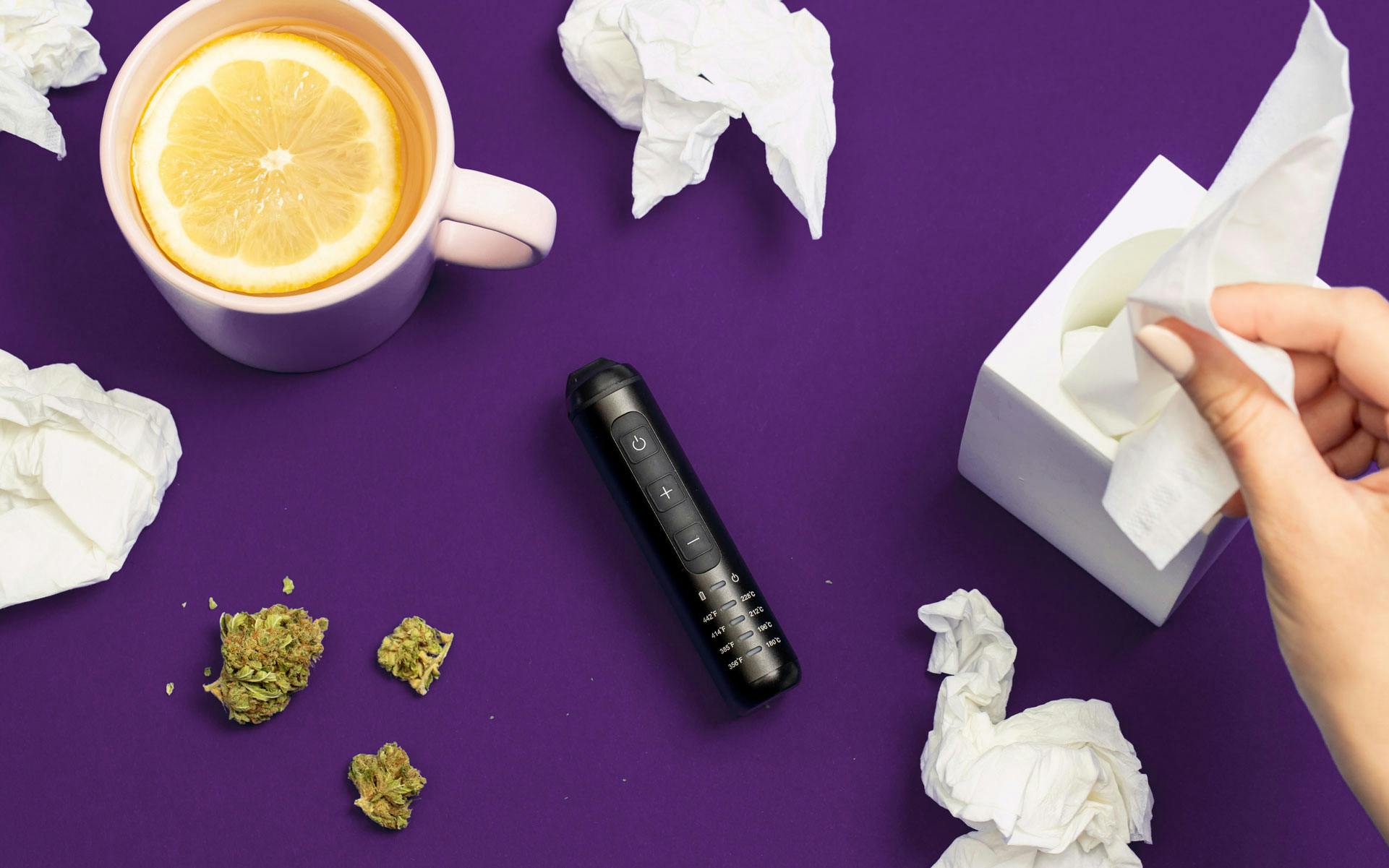After much anticipation, Canada finally has not just one, but two product options for cannabis suppositories. Classified as cannabis extracts, suppositories were technically allowed to be manufactured when legalization 2.0 rolled in October 2019. However, we didn’t see any on the shelves until October 2021.
And here they are. Bud for your butt (or beaver), kush for your tush (or taco)—the jokes write themselves.
The question now is, are Canadian consumers ready for suppositories?
The topic can be a bashful one. Suppositories are inserted vaginally or rectally, which can be a highly personal endeavour.
Even as a medical cannabis patient and overall weed enthusiast, I felt hesitant when it came to trying out my homemade suppositories. When I was finally able to buy ready-made pods, they sat in my medicine cabinet for weeks before I finally gave them a go.
It can be a real head trip putting things in personal places. But shyness didn’t stop me and if consumers are curious about suppositories, or any new format of weed product, they should feel empowered to do so.
Here’s the deal with cannabis suppositories in Canada (and no, they are absolutely not called weed tampons).
Canada’s first legal cannabis suppository
Founders and sisters Rebecca Thomson and Olivia Penner grew up practicing regenerative and sustainable agriculture on their family farm spanning four generations. Now they are growing a new kind of crop—CBD-enriched cannabis and hemp.
The sisters founded Prairie Grass, which produces cannabis flower, as well as Canada’s very first legal suppositories. “Pods for the people” come in two formulations: the Relief Pod, which has 10mg THC (Bruce Banner), and Eve Pod, which has 40mg CBD and 1.33mg THC (hemp-derived).
“Suppositories have been on the legacy market for decades, it’s a well-known format that a lot of people find effective,” says Penner. ”We both have healthcare backgrounds and so for us, it was really exciting to start formulating different types of cannabis products.”
Penner is a registered nurse and Thomson is a pharmacist, which is probably why they prioritized their medical launch over the adult-use market. It isn’t very often that a producer chooses a patient launch, which is a much smaller market than retail.
You don’t have to be a medical patient to access these pods though, they are also on the adult-use market, increasing accessibility and affordability for all kinds of cannabis consumers.
What’s in the bullet?
At the time of publication, there was only one brand offering legal suppositories (though another brand plans to launch its own suppository line soon).
Prairie Grass suppositories are made with the cannabis cultivated on their family farm and combined with a pharmaceutical base to make pods. They’re shaped like little bullets for easy insertion and kind of look like tiny pods.
“The base is both fat-soluble and water-soluble so it blends and dissolves really nicely together with the cannabis extract,” says Thomson, explaining that the cannabis extract needs a fat-soluble formula, while vaginas and rectums prefer water-soluble.
“There’s no oily film left behind that you can get from bases like cocoa butter, which can be irritating on more sensitive areas,” says Penner. “Pods were designed to be amicable with those sensitive environments and can be used vaginally or rectally.”
“Start low and go slow, even down below. That’s going to be the motto for 2022.”
Ashleigh Brown, CEO of SheCann.
The suppositories themselves are packaged individually in a plastic shell to keep them from getting crushed or contaminated. There is no applicator, to use them simply insert them into the desired area with your (clean) finger.
“Cannabis doesn’t achieve its full potential unless it’s cultivated with care, attention, and love,” explains Penner. “We have the agricultural experience and an understanding of science and physiology needed [to create the first legal suppository].”
The sisters saw a need that wasn’t being served in the legal space and they were inspired to “create something that can be easily and discreetly incorporated into daily life, when or if needed.”
Medical cannabis patients have been waiting forever
Is Canada ready for suppositories? Maybe not, but patients are.
“We’re ready for suppositories now because we’ve been waiting forever,” says Ashleigh Brown, CEO of SheCann and medical cannabis advocate.
“The majority of patients have tried and failed many different methods and formats and combinations over the years. So if nothing else has worked, are you going to be open to something that is foreign to you? Absolutely.”
Have you ever been in so much discomfort that you’d put an entire syringe of cannabis oil into your vagina? Or a tube of cortisone cream? Many patients have. These might seem like hilarious anecdotes but try and wrap your mind around the kind of desperation it takes. I assure you, this is never the first resort.
Brown shares that she’s heard from SheCann members that suppositories have brought relief for their conditions like spinal stenosis and nerve pain, Crohn’s and colitis, IBS, chronic pelvic pain, hernia pain, anything related to that area.
These are the lived experience of patients and they are invaluable to the industry. However, they by no means take the place of randomized clinical trials. Existing research shows that cannabinoids like THC and CBD might be helpful in treating female and male sexual health issues.
“The availability of legal cannabis suppositories signals to me that people are still listening to patients,” says Brown. “For years there have been many people who would have been happy to try suppositories but do not have the energy or understanding or intent to make them.”
If you are thinking about using cannabis suppositories for medicinal purposes, always be sure to talk to your healthcare professional or cannabinoid doctor prior to use.
There’s no need to shy, it’s just a suppository
There is still a large group of people who don’t understand suppositories as a delivery method. Brown shares that she held a poll to SheCann members asking about their willingness to try suppositories. 58% said yes, and 28% said maybe. That’s 28% who simply do not understand why or how to use suppositories.
Brown explains that the mindset that cannabis needs to be smoked is a prevalent stigma in cannabinoid therapy. It’s an evolution of experimenting from there to trying vaporizers, edibles, concentrates etc. Suppositories are another step in the evolution of how we think about, and how we use, cannabis as a therapeutic substance.

“The last thing in the world I want is for anyone to feel shame and have that shame cause them not to try suppositories. If they wanted to, of course,” says Brown. “We have to get over the idea that this is something taboo, or it belongs to a certain gender or even a certain category of issues.”
Will I get high from suppositories?
Suppositories offer a targeted dose of cannabinoids to a localized area that can help facilitate higher absorption rates in the body. Does that mean they will make you high? Probably not.
“The most appropriate and responsible answer to ‘will I get high from this’ is that we don’t know.,” shares Brown. “There is science to support how a baclofen (a pharmaceutical muscle relaxer) suppository works, but we don’t have the understanding of the mechanism of action for cannabis suppositories specifically.”
According to the folks at Prairie Grass, “each person’s endocannabinoid system is unique; while many don’t feel intoxicating effects from insertion, both localized and systemic effects are possible.”
So when using cannabis suppositories for the first time, it is important to do so in a safe environment with no commitments in order to safely gauge how you will react to the product. The old adage is true for suppositories, just like all cannabis products—start low and go slow.
“We can’t greenwash cannabis. You can’t pretend that any format is benign,” says Brown. “Start low and go slow, even down below. That’s our motto for 2022 when it comes to suppositories.”








